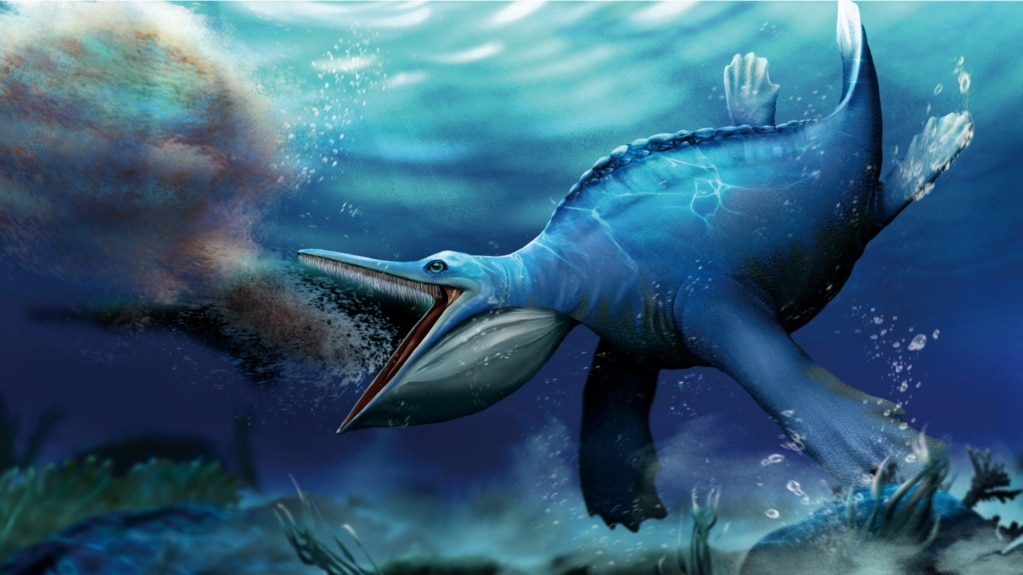Baleen whales, such as the blue whale, are huge sea animals. Baleen describes a filter-feeding system in their mouths through which they can eat huge amounts of very small ocean animals.
But, it appears now that whales were not the first sea animals to filter-feed.
Scientists recently reported their findings from a study of ancient remains of a sea reptile called Hupehsuchus nanchangensis. The fossils were unearthed in China’s Hubei area. The study appeared in the publication BMC Ecology and Evolution.
Hupehsuchus lived 248 million years ago, during the Triassic Period. Scientists say its fossil presents evidence of a filter-feed system similar to baleen whales.
The sea reptile lived during a time of intense biological changes following Earth’s worst mass extinction. Powerful volcanic bursts led to severe warming, destroying many kinds of life.
Unlike blue whales, Hupehsuchus was not large. The animal measured about one meter long, fossils show. Its mouth was narrow and toothless. It had a large tail that moved from side to side for swimming forward, and had front and back limbs to help it turn.
Its lower jaw was only loosely connected to the rest of the head bone. This permitted the animal to open its mouth widely to take in a large amount of water and the animals, zooplankton, it carried.
The baleen structure is made up of keratin, a soft organic material. The baleen traps little sea animals but lets the seawater flow out.
The researchers found evidence along the jaws suggesting the presence of soft tissues that could have served as baleen.
Paleontologist Mike Benton was a study writer.
“Altogether, this points to a soft pouch made of skin around the mouth and throat, as in modern baleen whales, and some kind of filtering device hanging from the jaws, like baleen,” Benton said.
But, he added, the baleen and skin was not fossilized.
Paleontologist Long Cheng of the Wuhan Center of China Geological is the study’s lead writer. He said Hupehsuchus would have continuously filter-fed at slow swimming speeds. He also said the animal would have fed in areas with a dense amount of zooplankton.
Long said Hupehsuchus took in water and the animals together into its mouth, “filtered out the water” and then swallowed the food.
Researchers first described Hupehsuchus fossils in the 1970s but lacked any good remains of the head. The new study involves two new fossils with well-kept head bones, or skulls.
Many sea creatures use some form of filter-feeding.
I’m Gregory Stachel.

